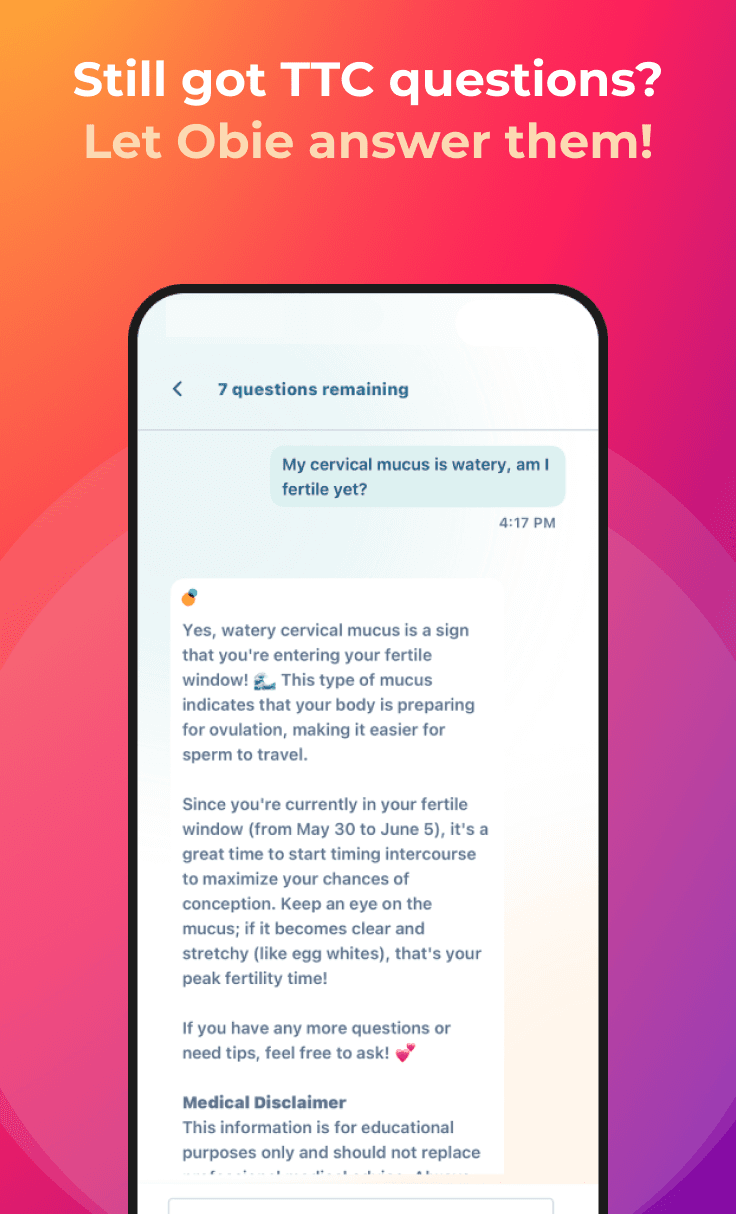Charting and Counting: A Man’s Guide to Ovulation
Fertility Charting
Obie Editorial Team

What can you do to help track ovulation?
You are a supportive partner. You are there for your partner when she needs you and you both have decided to start a family together. You are excited about your role in the actual conception and pregnancy process, pale though it may be in comparison to hers.
One way to connect with your partner when you’re trying to conceive is to show some interest in the math she has to do. She’s likely counting off the days to see when she’s going to ovulate so that she’ll know when the optimal time for the baby dance is going to be.
Why not take a minute and learn a little bit about what’s going on in your partner’s body and how she can predict when the best time for conception might be. Who knows? You might even discover some of this information before she does.
How ovulation works and how to track it
- A woman usually ovulates 14 days prior to the start of her period. The best time for her to get pregnant is during ovulation and the three or four days leading up to ovulation.
- If your partner’s cycle isn’t exactly 28 days, it can be harder to determine when she’s ovulating. If she usually has a 31-day cycle, she’ll ovulate on day 17. If she has a 28-day cycle, it’s day 14. Many women have irregular cycles, meaning you may need some help pinpointing the best time to try to conceive.
- One way to track ovulation is to chart changes to your partner’s cervical mucus. Cervical mucus is a secretion your partner has throughout the month. Just prior to ovulation, cervical mucus becomes more plentiful. It also changes in color and consistency. During this time, it should resemble the white of an egg. It will be nearly transparent, and similar in consistency to an egg white. It’s even referred to as “egg white cervical mucus.”
- Basal body temperature is another way to chart ovulation. A woman’s basal body temperature is her temperature while at rest. She can take her temperature first thing in the morning before getting out of bed. Basal body temperature increases by a few tenths of a degree just after ovulation. By tracking basal body temperature (with a basal body thermometer) from one month to the next, you can recognize the pattern and begin to be able to predict when she’s going to ovulate.
- Multiple methods of tracking ovulation are the most effective. Counting days, charting changes to basal body temperature, and looking for cervical mucus changes can when used together, give you a good idea of when your partner is going to ovulate each month. Once you pinpoint ovulation, it’s up to both of you to make it happen.
When should you have sex?
It's generally recommended to have sex 2-3 times a week every week to maximize your chances of pregnancy. In addition, you should have sex during the 5-6 fertile days "the fertile window", the day of ovulation, and the 5 days before that day. If you have been trying for a couple of months with no luck, talk to your partner about using some of these methods to try to pinpoint exactly when the best time is to try to make that baby.
Read More











